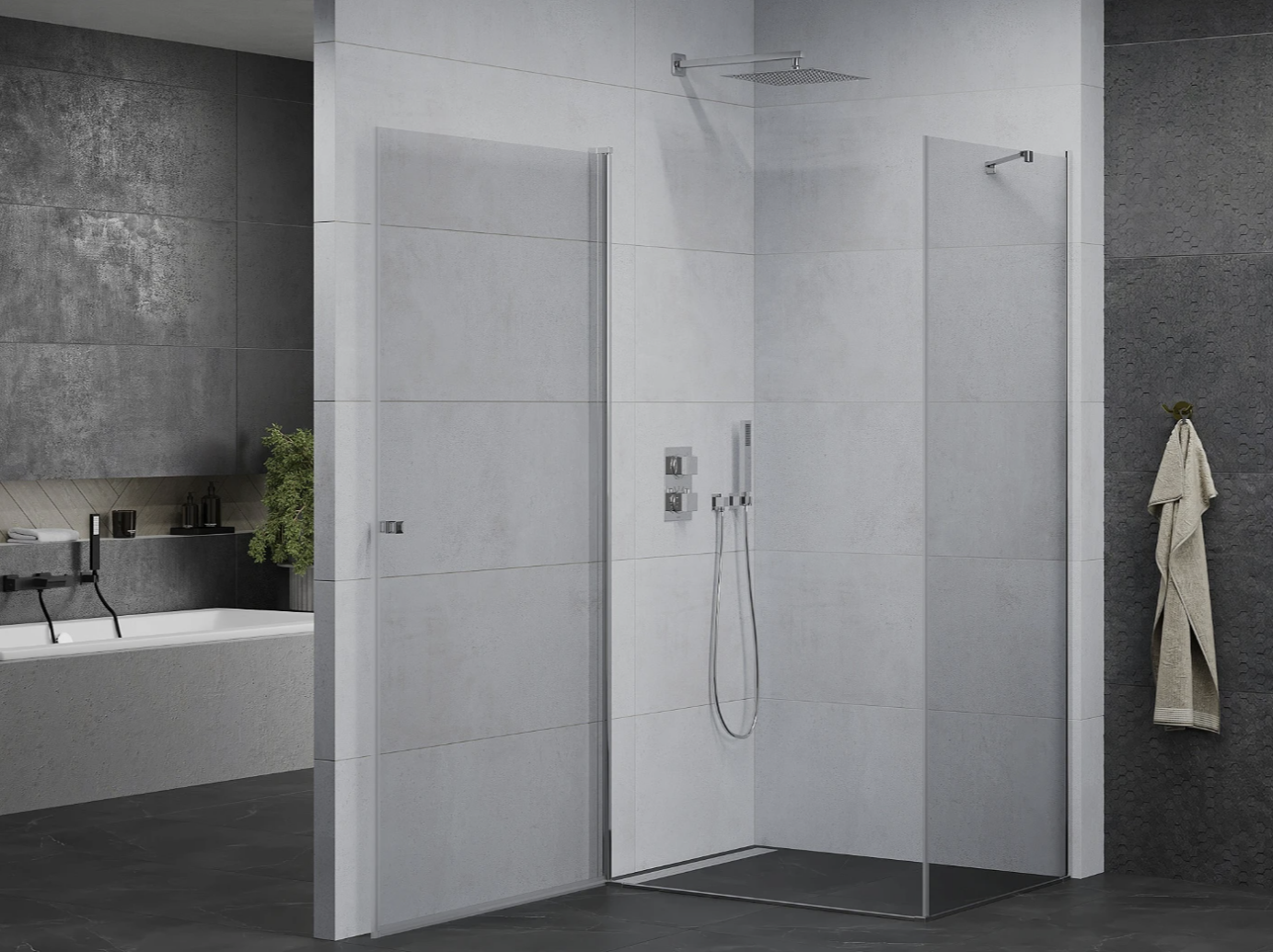
Modern design often means minimalism. This applies equally to colors, decorations, and the elements of interior furnishings. A minimalist bathroom is often a space where owners forgo a tray - shower enclosures are placed directly on the tiles. This solution has many advantages, but it is not without faults, and probably the biggest one is that a freestanding shower without a tray is easiest to install at the stage of finishing the bathroom. Later, it requires a complete renovation of the bathroom, although this doesn't mean it is impossible. The question is, what other advantages and disadvantages does a shower enclosure without a tray have?
Shower enclosures without a tray – how to drain water?
Modern technological solutions make it possible to set up a shower enclosure directly on the floor without the need for a tray. Of course, it is essential to ensure safety and ease of use here. There are various ways to arrange a bathroom without a tray. Here, the shower enclosure is placed directly at floor level, meaning an adequate water drainage system is necessary. For a shower without a tray, a linear drain works better; point drains are more suitable for trays.
Before you decide on a shower enclosure installed on tiles, i.e., a shower without a tray, you must check the floor's thickness – it's the thickness of the floor slab that determines whether a linear drain can be installed. For a thin floor slab, especially in apartment blocks, a wall drain might be a better solution. In both cases, it is also essential to properly profile the floor so that water can freely flow into the sewage system without the risk of flooding the bathroom - these are crucial considerations during the installation of a shower without a tray. The installation of a linear drain requires embedding into the floor or wall, which is why linear drains are easier to install during the construction and finishing of the house.
Shower without a tray in a niche
A walk-in shower works well in modern bathrooms, providing an excellent idea for arranging a small bathroom where every centimeter of space is valuable. The absence of a tray makes the space appear slightly larger, and instead of a classic enclosure, you can opt for glass walls or sliding doors, or even better, folding doors that take up little space. This way, you can create a shower area in a niche or corner of the bathroom. The easy installation of the enclosure, specifically the wall, means that separating the shower from the rest of the bathroom requires little effort.
One thing you can't forget when choosing a shower enclosure without a tray is particularly thorough protection of the floors; robust waterproof insulation must be applied. Besides, remember that since there's no secure tray, non-slip tiles must be placed on the floor. Otherwise, the shower might end with a painful fall.

Advantages of a shower enclosure without a tray
The main advantage of a shower enclosure without a tray is that it makes the bathroom truly stylish and modern. A walk-in shower is not just about modern arrangement; it also offers great user convenience. A shower without a tray significantly eases the use of a shower for people with disabilities. Here, it's essential to consider additional installation of wall-mounted handles under the shower. An undeniable plus is also the ease of maintenance; a smooth floor doesn't require as many cleaning efforts as a classic tray.
Modern bathroom arrangements allow for creating a bathing area even in a very small bathroom. The idea matters; installing a shower doesn't have to involve installing a tray or a shower cubicle. A tempered glass panel and an appropriate drain are all you need to enjoy a trayless shower in most bathrooms.
Shower enclosure without a tray – disadvantages
A shower enclosure without a tray may involve a few inconveniences, which are relatively easy to address. The biggest issue could be the plumbing, specifically potential problems with a linear drain. If the thickness of the floor slab doesn't allow for embedding a couple of centimeters below the floor level, a wall drain remains an option, and in the end, a point drain may work.
And with this major issue, the disadvantages of a shower enclosure without a tray essentially end. Walk-in enclosures are no less waterproof than traditional enclosures; using them doesn’t mean water all over the bathroom after every shower. An open shower can be cooler, but to prevent this, wing doors can be installed in such a shower enclosure, ensuring optimal temperature during use.


















